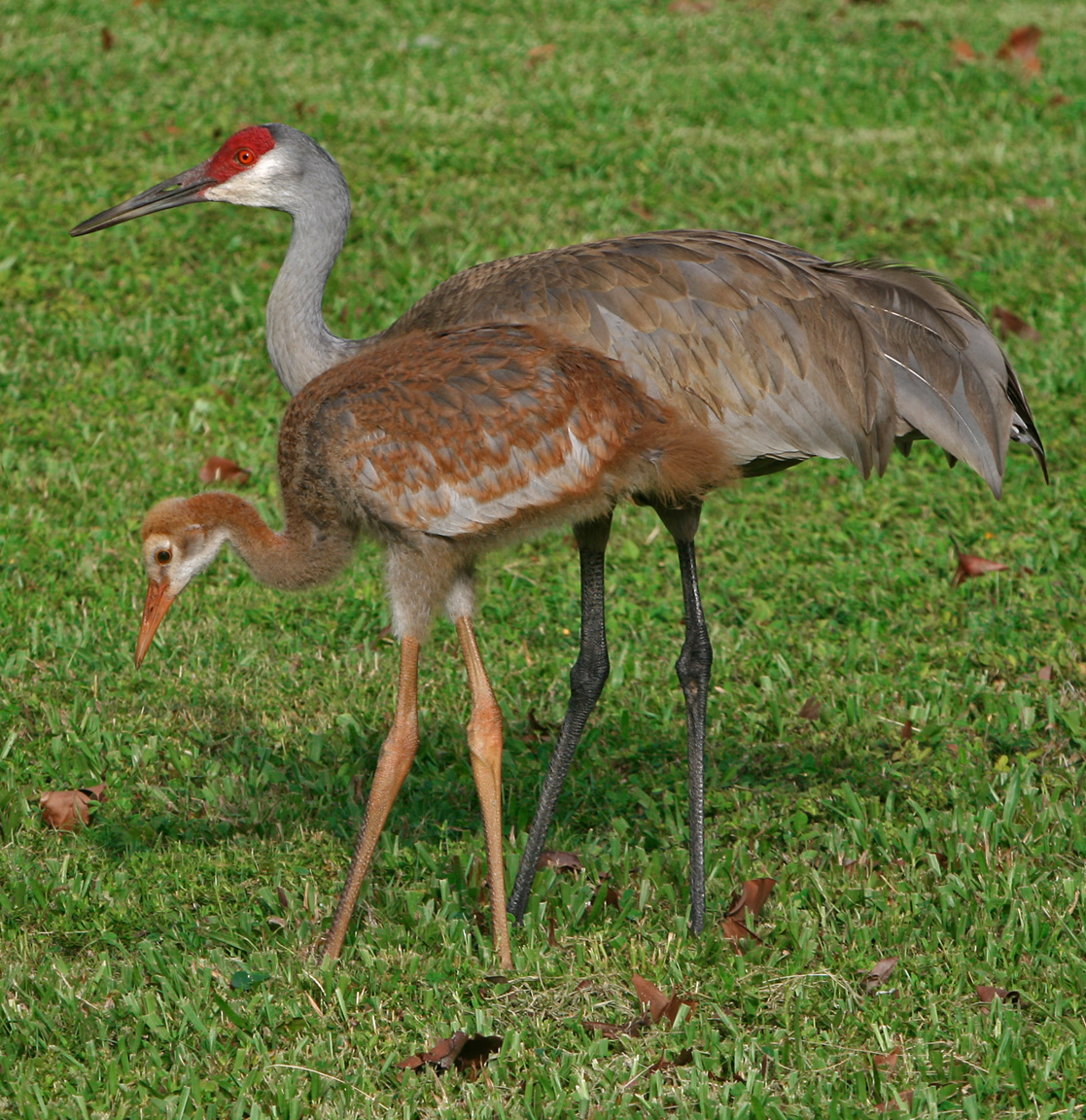The Sandhill Crane (Grus canadensis) is a species of large crane of North America and extreme northeastern Siberia. The common name of this bird references habitat like that at the Platte River, on the edge of Nebraska's Sandhills in the American Midwest. This is the most important stopover area for the nominotypical subspecies, the Lesser Sandhill Crane (Grus canadensis canadensis), with up to 450,000 of these birds migrating through annually.
Adult is gray overall; during breeding, the plumage is usually much worn and stained, particular in the migratory populations, and looks nearly ochre. The average weight of the larger male is 4.57 kg (10.1 lb), while the average weight of females is 4.02 kg (8.9 lb), with a range of 2.7 to 6.7 kg (6.0 to 15 lb) across the subspecies. The Sandhill Crane has a red forehead, white cheeks and a long dark pointed bill. Its long dark legs trail behind in flight, and the long neck is kept straight in flight. Immature birds have reddish brown upperparts and gray underparts. The sexes look alike. Size varies among the different subspecies; the average height of these birds is around 80 to 120 cm (2.6 to 3.9 ft). The standard linear measurements of the Sandhill are: the wing chord measures 41.8–60 cm (16.5–24 in), the tail is 10–26.4 cm (3.9–10.4 in), the exposed culmen is 6.9–16 cm (2.7–6.3 in) long and the tarsus measures 15.5–26.6 cm (6.1–10.5 in).
 |
| Sandhill Crane (Grus canadensis) |
This crane frequently gives a loud trumpeting call that suggests a French-style "r" rolled in the throat, and they can be heard from a long distance. Mated pairs of cranes engage in "unison calling." The cranes stand close together, calling in a synchronized and complex duet. The female makes two calls for every single call of the male.
The sandhill crane's large wingspan, typically 1.65 to 2.1 m (5.4 to 6.9 ft), makes this a very skilled soaring bird similar in style to hawks and eagles. Utilizing thermals to obtain lift, they can stay aloft for many hours, requiring only occasional flapping of their wings and consequently expending little energy. With migratory flocks containing hundreds of birds, they can create clear outlines of the normally invisible rising columns of air (thermals) that they ride.
 |
| Sandhill Crane (Grus canadensis) |
The Sandhill Crane flies south for the winter. In their wintering areas they form flocks of over 10,000 birds. One place to observe this is at Bosque del Apache National Wildlife Refuge, 100 miles south of Albuquerque, New Mexico. There is an annual Sandhill Crane Festival in November.



.jpg)

.jpg)




0 comments:
Post a Comment